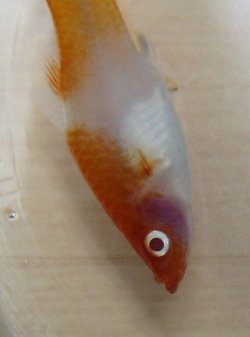bellatrix
New Member

I just purchased new fish - 2 platy, 2 koi swordtails, 2 small frogs and 1 glass cat. As soon as I added the fish, all four livebearer showed signs of distress: sinking, rapid gill movement, fins slammed back. The two swordtails were the worst. The male fell over and had bright red gills, then died in about 15 minutes. The female is still (1 hour later) sitting at the bottom of the tank. The platies are recovering, but have small bubbles all over their bodies, particularly on the fins. The glass cat also has bubbles.
My water parameters are all normal (and the test kits are good, used them during the tank cycle):
Tank size: 40g
pH:7.2
ammonia:0
nitrite:0
nitrate:0-1
kH:2
gH:1
tank temp:77
I have a penquin 330 (dual) biowheel filter, one air stone (fairly powerfull) and two bright flor. lights on for 12 hours plus natural sunlight hits the tank slightly (hoping to grow green algae for the otos)
The tank was set up 3 months ago and cycled normally (if slowly). I have 3 zebras, four cory cats, one glass cat and 3 otocinclus in the tank that were added slowly. The amonia/nitrites never spiked with the addition of the fish. They appear healthy. I did loose one glass cat that I could not get to eat anything and an Oto to a swollon abdomin. The existing fish do not have bubbles on their fins. The zebras are acting fine, but looked slighty "off" the other day. Unfortunately, I can't explain why I think they look that way. The water was changed (1/4) about 3 weeks ago.
The tank does have tons of tiny bubbles in the water. One of the new plants, a hornwort, is growing like CRAZY. I've never seen anything like it, especiallly because I expected it to die with the soft water (little co2). Is it pumping out oxygen?
The only answer I could come up with is that the tank is oversaturated with oxygen and the fish died of gas bubble disease. However, I don't understand why my existing fish are OK. Does anyone have an idea? I'd like to replace the swords, but not if they will drop dead again. Would slowing adding tank water to the new fish bag help? I'm kicking myself for not doing it this time (the fish were floated for 50 min to match the temperature.
Help!!
Bellatrix

 /www.fish-disease.net/diseases.htm
/www.fish-disease.net/diseases.htm